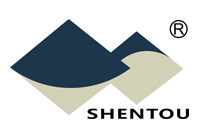CHINA AUTOMOTIVE SUPPLIER QUALITY MANAGEMENT BRIEFING
03/01/2021
Vol. 5, No. 3, March 2021

① QUALITY CHALLENGES & SOLUTIONS WITH YOUR SUPPLIERS IN CHINA
Case Study Of A Quality Complaint On Aluminum Die Casting Products
- The Importance Of Process Quality Capability Improvement
To Ensure Stable Product Quality (Ⅴ)
(Continued from the last issue)
▌The impact of the machining process on having black spots on the surface of casting
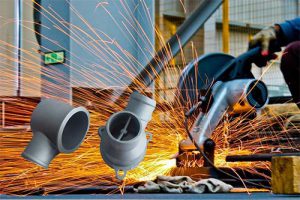 The impact of oxidation blackening on the surface of castings produced by machining processes is mainly reflected in the cutting fluid used, the protection during storage and transportation of the machining process and the temperature and humidity of workplace.
The impact of oxidation blackening on the surface of castings produced by machining processes is mainly reflected in the cutting fluid used, the protection during storage and transportation of the machining process and the temperature and humidity of workplace.
In winter, when the die castings are transported from the die casting workshop to the machining workshop or stored, if there is air conditioner in the room and the temperature is significantly higher than outdoor, the water vapor in the air will condense the frost on the surface of the castings, which will cause rapid oxidation of the castings. Therefore, when the castings are just transported to the room, it is suggested that the package not be opened or parts not processed right away, so as to prevent the casting from frosting and oxidation blackening due to long time storage. In the high temperature season, the temperature of the products in the processing air conditioned room is relatively low, so they cannot be directly transferred to the warehouse with higher temperature. They must be transferred to a warehouse buffer zone for temperature transition, otherwise the products will be corroded by condensation water and produce black spots.
Aluminum alloy is amphoteric metal, it will change color when it meets either acid or alkaline material, so we should use neutral cutting fluid when choosing cutting fluid in machining.
▌The impact of cleaning and passivation treatment on having black spots on the surface of castings
After machining, the die castings should be cleaned and passivated as soon as possible to prevent the products from oxidation and blackening in the air.
The process includes the following: ultrasonic cleaning (oil removal) – secondary cleaning (removal of residual ultrasonic liquid on the surface) – surface conditioning (activation) – secondary cleaning (removal of surface conditioning liquid on the product surface) – surface passivation (phosphating) (uniform protective film is formed on the product surface) – three times cleaning (the first two times are for the removal of residual passivation liquid on the surface, and the last one is further cleaning to ensure that the product is clean, in order to facilitate product drying) – drying – offline.
In the whole process of cleaning and passivation, we should pay attention to the frequency of cleaning solution replacement; temperature and pH value of cleaning solution; pH value, temperature and passivation time of passivation tank; and drying temperature and time and other process parameters.
If it is not cleaned or cleaned thoroughly, the surface of die casting parts will be left with corrosive substances such as release agent, cutting fluid, passivation fluid and water stains, which will accelerate the speed of mildew forming and blackening of aluminum alloy die casting parts. Improper selection of cleaning agent or cleaning process will also cause corrosion and oxidation of die castings. Therefore, after machining, die castings should be cleaned, passivated (if applicable) and dried immediately.
▌The impact of air tightness test on having black spots on casting surface
Different customers have different requirements for various products. The product purchased by the author’s customer is thermostat housing, which is an aluminum die casting machine part. The customer requires air tightness test to prevent product leakage.
For air tightness test, the detection method generally used is water test, with water as the detection medium. The parts are placed in a special fixture and then immersed in water. It is then filled with a certain pressure of compressed and the pressure is held for a period of time. It is a good product if there is no bubble on the water surface. After the air tightness test, the product is taken out from the water and stored at the prepared working stations. At this time, we should pay attention to the position and direction of the product, and the direction that is easy to drain the accumulated water should be downward, otherwise the accumulated water cannot be drained out, which will cause water stain corrosion and blackening in the depression of the product. The natural drying environment temperature, humidity and drying time are also reasons for water stain corrosion and blackening, the author thinks that drying treatment should be carried out to eliminate the risk of water stain corrosion and blackening caused by excessive natural drying.
▌The impact of packaging on having black spots on the surface of castings
Packaging is generally decided by customers. Different customers require different packaging. The author observed that there are several packaging methods: first, placing the product in an outer box which has a large plastic bag inside. The products are placed in layers inside the large plastic bag, with each product touching with each other. Cardboard is used to separate each layer. After the placement, 1-2 small bags of desiccant will be placed on the top layer, then the mouth of the large plastic bag is twisted at the top of the box and the box cover is sealed. The advantage of this packaging is that the cost is the lowest and the most easy to operate; the disadvantage is that there will be collision and friction between each product in transit, resulting in oxidation and blackening. This packing is suitable for most customers with large order quantities and stable orders.
(To be continued)
By Felix SS YUAN
② CRITICAL FAILURE MODES / QUALITY CONTROL POINTS IN FOCUS
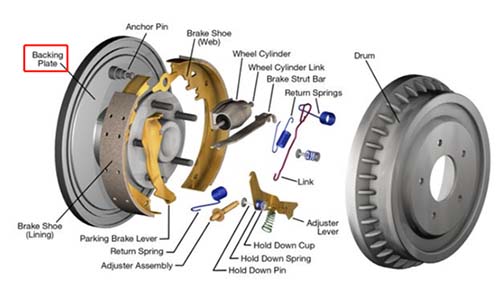
Dust Cover
Dust cover is generally installed on the drum axle. It is fixed on the axle and does not rotate. Two anchor pins are installed on the dust cover to support the brake shoes. Dust cover, technically known as brake backing plate, prevents sand and other foreign matters from entering the brake system and affecting the brake safety.
Generally, there are also holes drilled on the dust cover for observing the wear of brake pads and heat dissipation. Dust cover usually uses thin and low carbon steel as the material, and the surface is painted or sprayed with plastic for anti-corrosion treatment. Because the temperature of the brake will rise to more than 500 °C when braking is applied for a long period of time, high temperature resistant paint is needed.
▌The primary failure modes
Corrosion, abnormal noise and deformation.
The main reasons for failure are that the quality of protective layer is not up to standard or the coating is too thin, or the material of steel plate is inferior and its strength is too weak causing deformation. During driving stones and other foreign matters would hit the brake backing plate and make abnormal noise. Some abnormal noises are caused by effect of the wind when the plate is deformed.
▌Preventive measures
Carefully review and verify the thickness and strength of the manufacturer’s steel plate material, the material used for the protective layer and the thickness of the paint layer. Professional manufacturers will generally timely monitor the quality with material testing machine and salt spray testing machine.
By Andy RS ZHANG
③ KEY CONCEPTS & PRACTICES IN SUPPLIER QUALITY MANAGEMENT
ISO/IEC 17025
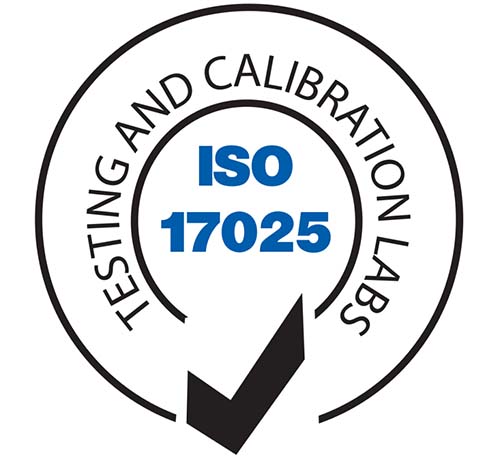
Many Chinese automobile spare parts factories have in-house laboratories that are used to monitor and control the qualities of the products being developed or produced. A good sign that a laboratory fully complies with international standards is when the lab is certified to ISO/IEC 17025.
ISO/IEC 17025 (General Requirements for the Competence of Testing and Calibration Laboratories) enables laboratories to demonstrate that they operate competently and generate valid results, thereby promoting confidence in their work both nationally and around the world.
It also helps facilitate cooperation between laboratories and other bodies by generating wider acceptance of results between countries. Test reports and certificates can be accepted from one country to another without the need for further testing, which, in turn, improves international trade.
④ CHINA INDUSTRY & MARKET UPDATE
Cost of raw materials:
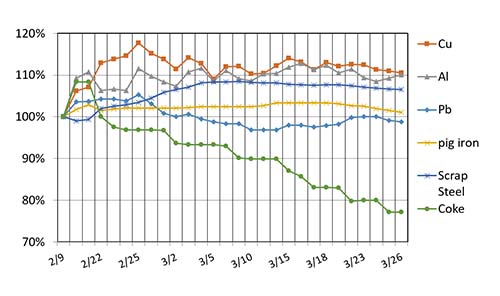
Exchange rates:
![]() USD/RMB: 1:6.4893
USD/RMB: 1:6.4893
![]() EUR/RMB: 1:7.7744
EUR/RMB: 1:7.7744
![]() RUB/RMB: 1:0.0870
RUB/RMB: 1:0.0870
March 2021
The above information is for reference only
⑤ IT HELPS TO KNOW...

China Supply Chain Alert
undefinedAs we come to the end of March 2021, there are some positive signs regarding the raw material costs, the exchange rates and the international shipping costs, some of the main factors that have seriously impacted the Chinese export over the past several months.
Prices of some of the raw materials, such as the grey iron, scrap steel and copper, have dropped significantly, with the grey iron price now back to the level at the beginning of the month. There are reports that the abnormally strong domestic OEM business might start to slow down in April or May, further releasing the pressure on the raw material costs.
Meanwhile, the exchange rate between the USD and CNY has changed from about 6.45 at the beginning of the month to above 6.50 towards the end of the month. The change is not large, but it has already given some confidence back to many Chinese exporters.
And the international shipping costs from China to Europe and the US have dropped about 10% to 15% in March. But the current Suez blockage by the Ever Given container ship has just created much more uncertainty to the global shipping industry.
SHENTOU SUPPLY CHAIN MANAGEMENT CO. LTD. is a Shenzhen, China, based company serving international automotive clients in the implementation of their China strategies and programs. CHINA AUTOMOTIVE SUPPLIER QUALITY MANAGEMENT BRIEFING is a bi-monthly newsletter published by Shentou to address the specific and unique quality challenges and concerns international automotive companies face with suppliers in China. Comments are welcome at qms@shentou.com. Click here to subscribe.
